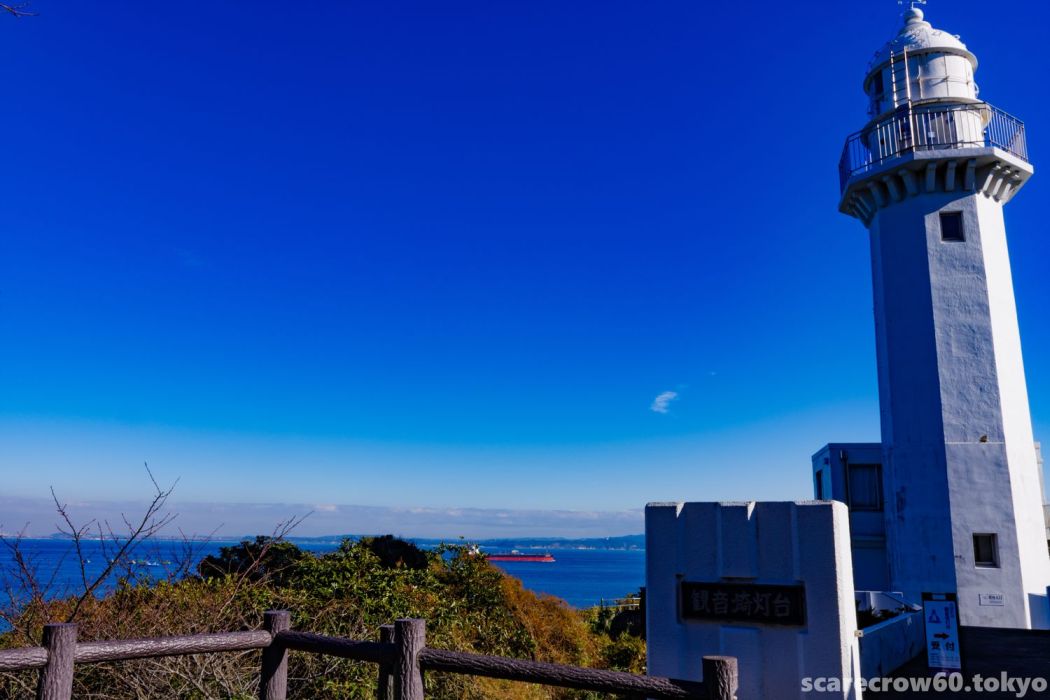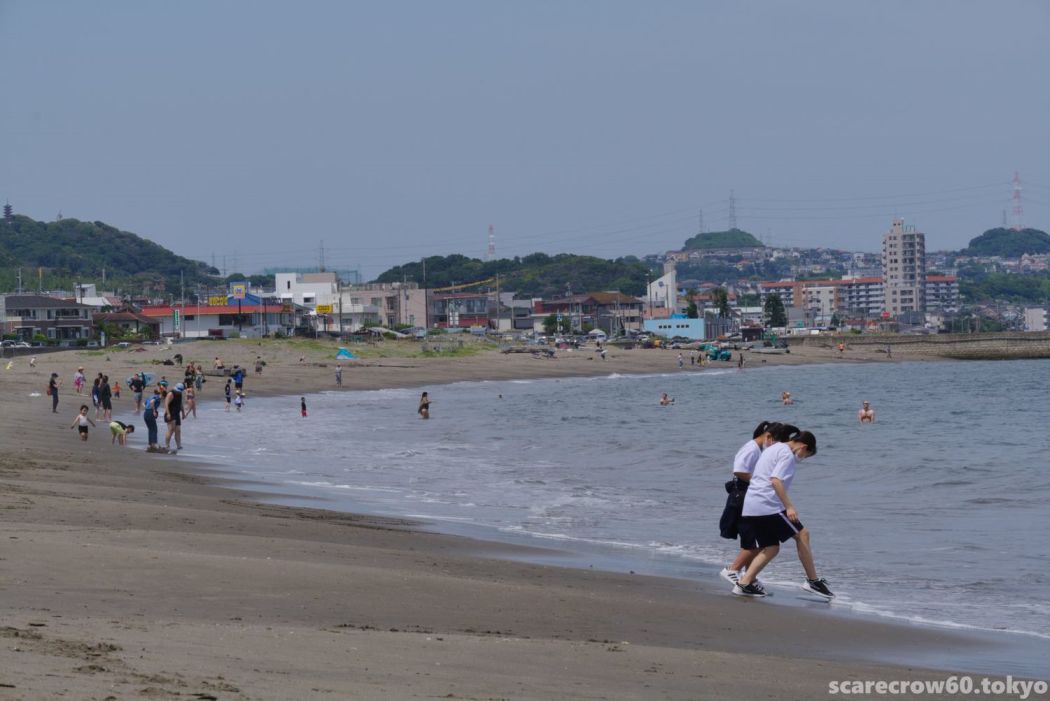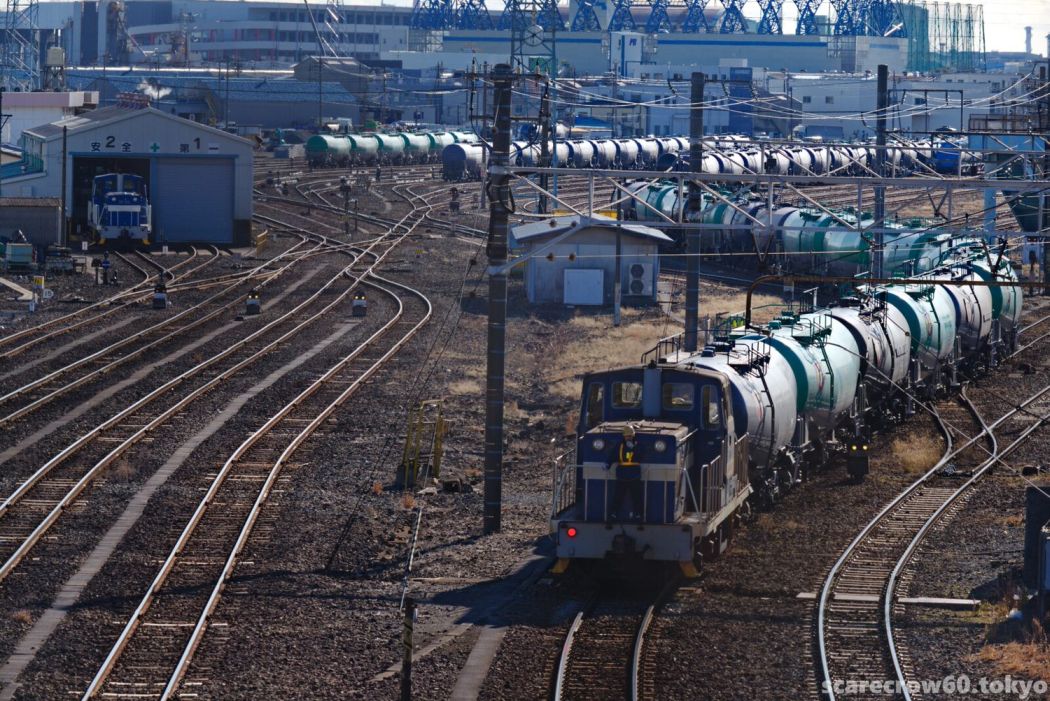I started Keikyu Line Photo Walk with a light heart in the fall of 2016, the year I got my first SLR camera, PENTAX K70, and started playing with it. I would like to take a look back.
Here is a map of the Keihin Electric Express Railway line that covers all the stations I visited. Here is a 
Shinagawa-Horinouchi-Uraga is the Keikyu Main Line. Almost of other lines (Sengakuji – Shinagawa, Haneda Airport Line, Zushi Line, Kurihama Line) are branch lines operated directly with the main line. Only Daishi Line is separated with main line. If I am not mistaken, there are 72 stations in total. Beyond Sengakuji, the line connects to the Asakusa subway Line and the Keisei Line, with trains running directly to Narita Airport in the distance.
The above diagram is as of 2018, and some stations were renamed in ro 2020.
Keikyu Main Line: Kagetsuenmae → Kagetsu Sojiji, Nakakido → Keikyu Higashi Kanagawa
Daishi Line: Sangyo-doro → Daishi-bashi
Zushi Line: Shin-Zushi → Zushi/Hayama
At the time of my visit, two stations on the main line had old names, while Daishi-bashi and Zushi/Hayama had new names.
Now, as I look at the map and think back over the years of crossing all the stations, there are five topics I’d like to talk.
1. Knowing all the stations is not boring.
If you know more or less what the city around every station looks like, you will not be bored while riding. It is definitely more fun to look out the train window. Actually, it’s not so much fun as it is unsettling. Whenever a new building is erected or the sign of a prominent store changes, I become more curious than necessary and want to go and check it out.
The photo shows the Tsurumi River Bridge seen between Tsurumi Market and Keikyu Tsurumi (reproduced from an earlier article).
2 Yokohama and Yokosuka are both too big.
The main line extends from Tsurumichiba to Kanazawahakkei with 23 stations, and Rokuura in Zushi line is the 24th station. All of them located in Yokohama city. Every next station for me was still in Yokohama.
The general image of Yokohama is formed around Sakuragi-cho, Kannai, and Chinatown, but the Keikyu Line extends Yokohama in the west and south directions. The photo shows “Umi no Koen” (Sea Park), a few minutes by Seaside Line from Kanazawa-Hakkei, the southernmost point of the city (reproduced below).
Beyond that, Yokosuka City is too big enough. From Oppama to Uraga, the end of the main line + Tsukuihama on the Kurihama line, 17 stations are in Yokosuka City. The image of Yokosuka in me has changed a lot. Not only the military port and Dobuita Street, but also the Nissan plant in Oppama, Anjinzuka, Kannonzaki Lighthouse, Kurihama Ferry, and YRP are all Yokosuka.
The photo shows the Kannonzaki Lighthouse, which I visited by bus from Uraga (reproduced here).
*Once I thought Keikyu was a railroad for Tokyo residents to go to Yokohama and Misaki Coast, but in fact it is a railroad for people living in Yokohama and Yokosuka, which have 41 stations together.
3. Only the Haneda Airport Line is nationwide
So, I have felt again that the Keikyu Line is a rather local railroad connecting Keihin, Yokosuka, and Miura, but only the Haneda Airport Line is exceptional in the presence of the passengers and the size of their luggage.
The tension (start) and fatigue (return) of business passengers, and the excitement (start) and fatigue (return) of holidaymakers…both are tired on return journey…I feel a national atmosphere that does not exist on the main line or other branch lines. It may be quite annoying for local passengers along the line, though.
The photo shows the elevated Haneda Airport Line branching off from Keikyu Kamata (re-recording).
4 Cross-seat best
For example, to go from Shinagawa to Yokosuka, Misaki, or the deepest part of the Miura Peninsula, it takes more than an hour even if you take the Keikyu’s fastest train, the “Kaitoku”. It is quite painful to spend this time in a long-seat car, which is a standard feature of commuter trains in urban areas.
But Keikyu is different. Many cross-seat cars with seat conversion are used for the rapid special between Sengakuji and Misakiguchi, and they are very comfortable to ride.
The photo is a casual shot of a Sengakuji-bound train stopped at Misakiguchi Station.
The use of convertible cross-seats on trains that can be ridden with ordinary fares can be seen in the Kansai region, for example, on JR, Hankyu, and Keihan trains, but is extremely rare in the Tokyo metropolitan area, where passenger volume is high. Thanks to this, I can’t imagine how much more comfortable my photographic excursions south of Yokosuka have become.
This Keikyu 2100 series two-door, cross-seat car has no through doors on the first car, so it cannot enter the Asakusa subway line (front doors are required by law for subways with sections where the side distance between the building limit and the base limit of the car limit is less than 400 mm). Therefore, all Keikyu cross-seat cars turn around at Sengakuji. In other words, if you aim for the first train from Sengakuji, you have a high probability of getting a cross-seat train.
5 My photographic skills are…
The years of Keikyu photo walk since I got my first SLR camera in my hands have been a mini-history of my photographic training.
Unfortunately, or perhaps predictably, there has been little progress in my skills commensurate with my experience. I am now thinking that I would like to continue my life as an eternal beginner.
Well, that’s enough of the overall story. Next time, let’s take a look back at some of the spots that left a particularly strong impression on me.



